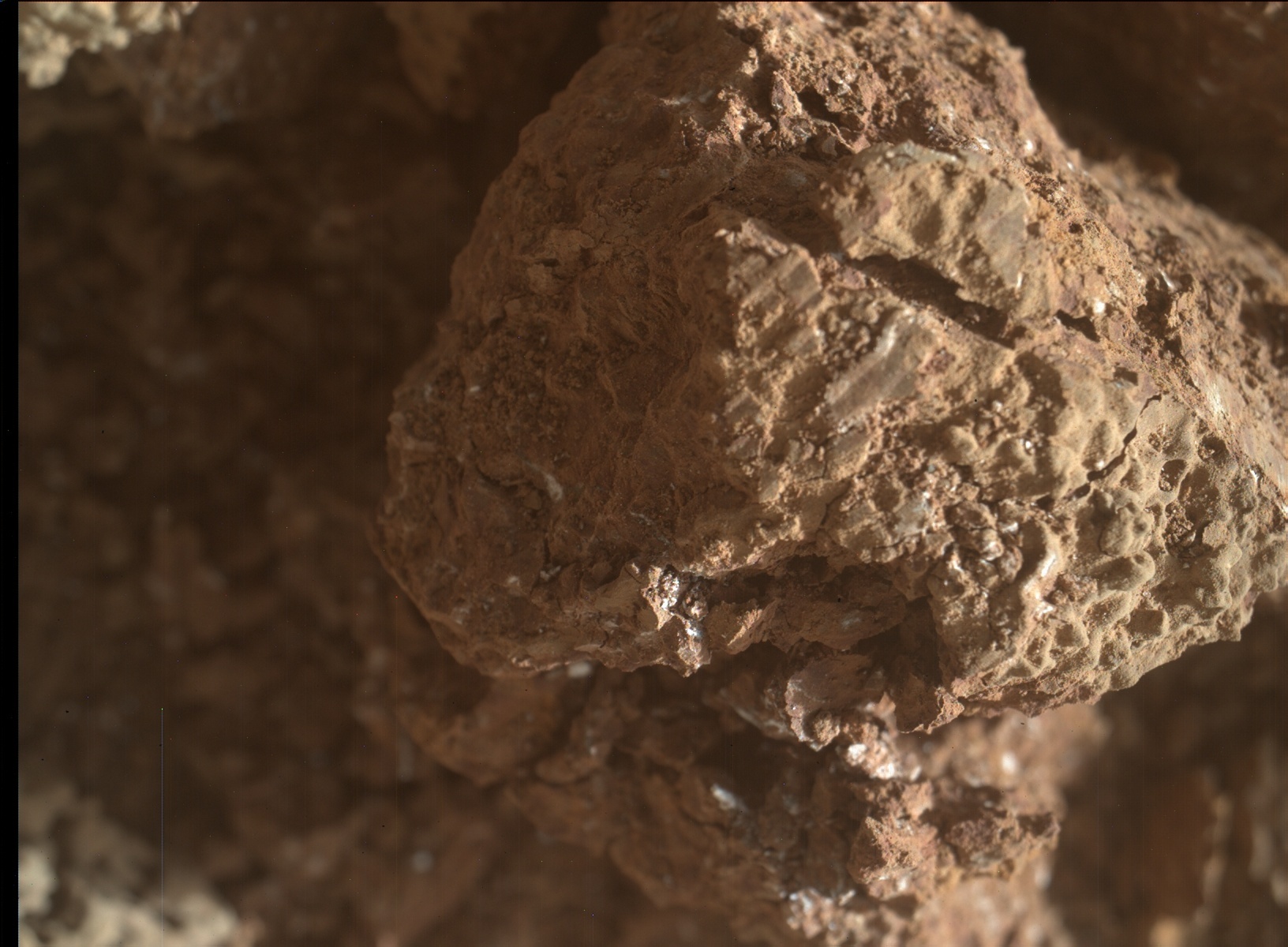2 min read

In the blog preceding this one Lucy reported that we had successfully carried out our move to crush some nodules and get to see their insides. The image atop this blog shows evidence of our drive across a nodule – look closely for very straight imprinted lines in the middle of flattened areas that appear slightly more grey. You can also see cracks, especially clearly on the right of the nodule in the image, but if you look around, you’ll find there are more of them. Some of the scratched areas are looking white, too. All those features will allow us an insight into the nodules and an interpretation beyond what we can otherwise see on the surface. As much as the surface can tell us – here we are getting to the heart of those nodules!
In today’s plan, ChemCam is looking at the wheel-disturbed rocks with a LIBS observation on target ‘Picardy Stone’ and with a passive spectral observation on target ‘Pollock.’ Mastcam is joining the broken rock feast with a multispectral observation on an area named ‘Acadian,’ which is also investigated by APXS and MAHLI. Last but not least, a dune feature, now named ‘Longhill,’ receives some attention with a Mastcam mosaic to further study the dunes on Mars. While dunes can tell us a lot about both current and past wind and climate, there is also atmospheric monitoring in the plan to document the current conditions around the rover adding to our cadence of images to assess dust levels in the atmosphere – and our dust devil searches. And, of course, REMS is sending its daily weather report, and on top of all the atmospheric science possible with those long-term datasets, we can just enjoy knowing what temperature it is on Mars today, too. There is a drive in the plan that should set us up nicely for some more investigations of this interesting area. Images after the drive will give us first insights, and ChemCam gets a head start on the chemistry through an AEGIS observation.
Written by Susanne Schwenzer, Planetary Geologist at The Open University







